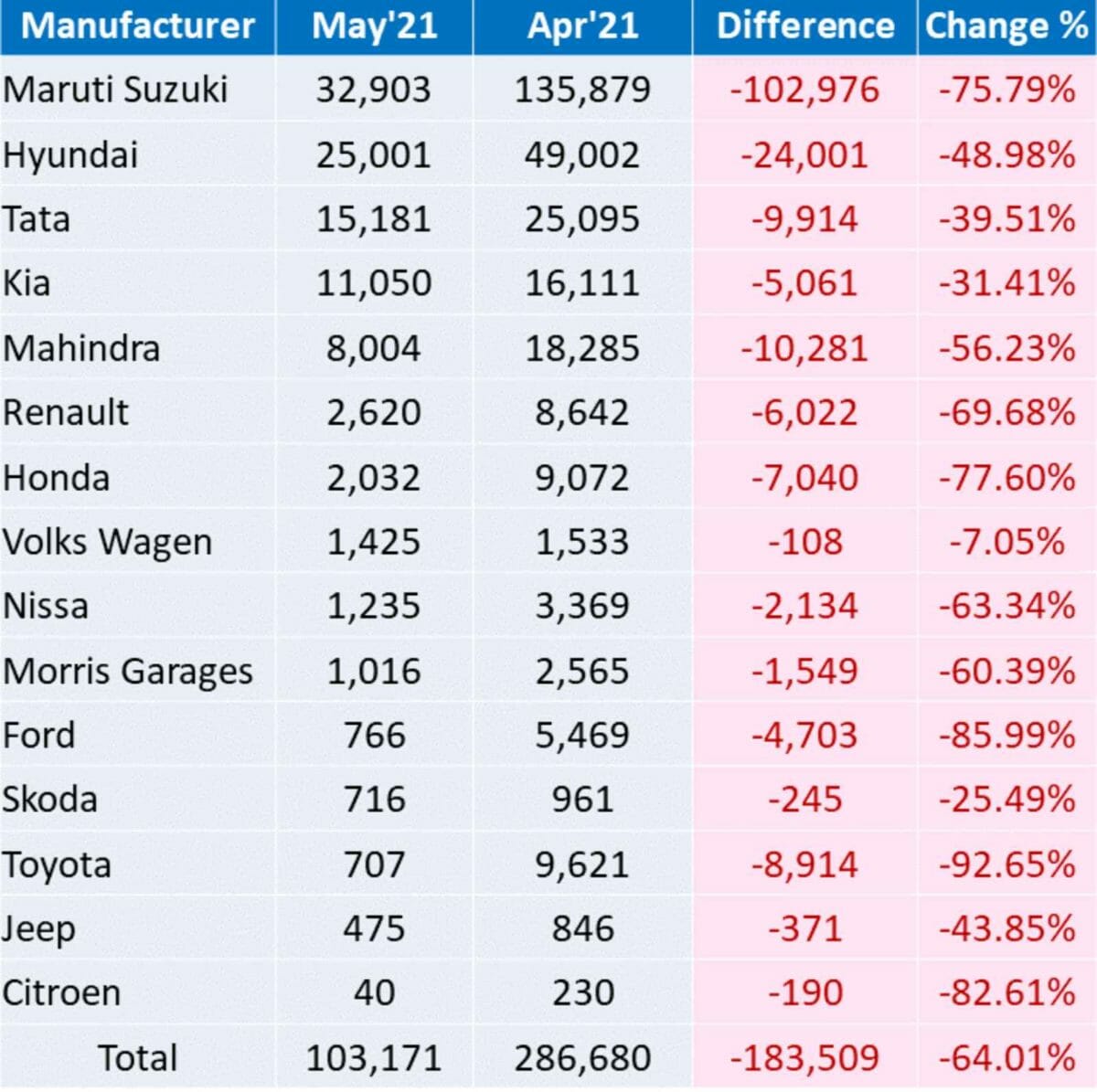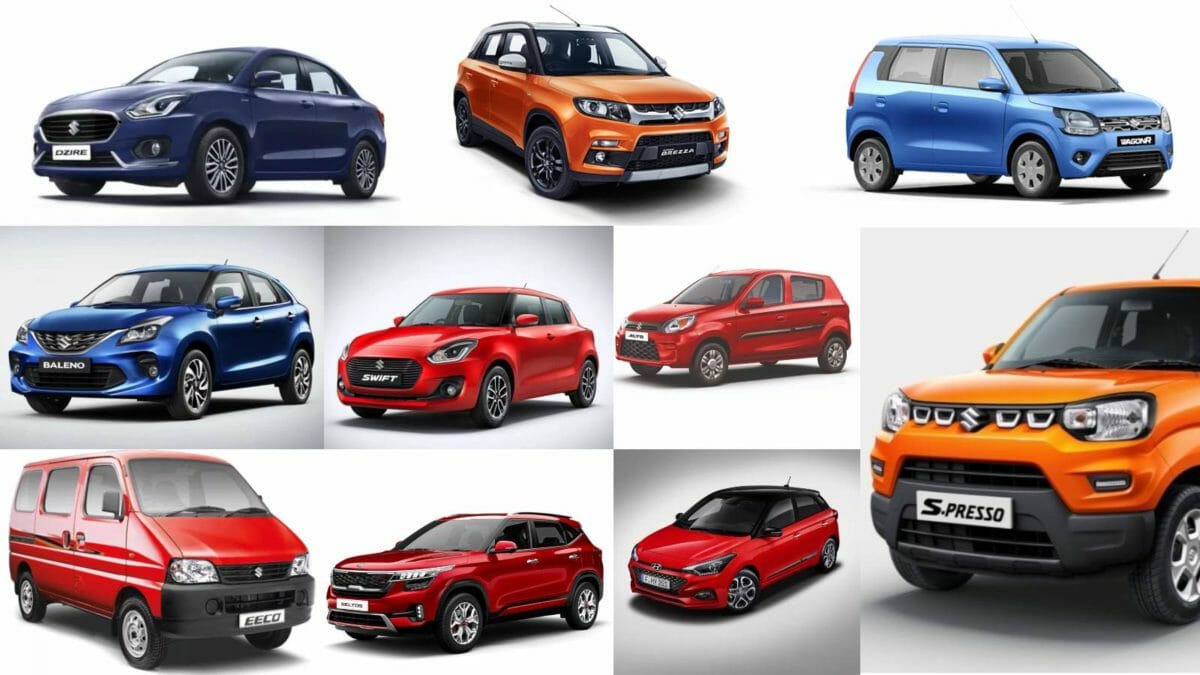The second wave of COVID-19 not only shook the healthcare system in India but also affected most industries including the automotive sector. After a spike in sales numbers in the last quarter (Jan-Mar 2021) the industry saw a steady dip as soon as the new restrictions were implemented by the government.
More Details
Though the Y-o-Y growth looks better for most manufacturers, the numbers as compared to April 2021 tell a different story. The consolidated sales have dipped by a whopping 64% for passenger vehicles. Here is a snapshot of how the OEMs fared.

Maruti-Suzuki has the largest market share in the automotive sector and has seen one of the biggest dips among other players. One of the reasons is that Maruti had shut down its plants to curb the industrial use of oxygen and divert the same for medical purposes. Hyundai saw its sales numbers reduced by almost half of what they achieved in April 2021. Tata too saw a dip in both its passenger vehicle and commercial vehicle sales however, Tata’s market share has grown from 8.8% in April to 14.7% in May.
While Kia lost one-third of its sales as compared to April, Tae Jin Park, Chief Sales Officer for Kia India said, The ongoing second wave of COVID-19 pandemic made things tough for all businesses and the automobile industry was no exception, as normal business operations got disturbed. In these tough times, the relentless efforts of our teams and partners enabled Kia India to achieve its highest ever market share of 10.7%. We are confident that the need for personal mobility and pent-up demand will drive the recovery for the entire industry in the months to come.”
Mahindra and Mahindra also saw a 56% dip from April however they gained 1.4% in market share which now stands at 7.8%. Vijay Nakra, CEO for Mahindra’s automotive division said, “With the cases coming down and gradual opening up of markets, we foresee strong demand rebound. We are working closely with our supplier partners to manage supply chain issues and meet market demand.”
On the positive side, the graph will go up given the pent up demand as more and more consumers are opting to buy vehicles to avoid public transportation. However, owing to lockdowns, plant shutdowns and availability of resources, all manufacturers are finding it difficult to meet these needs.

